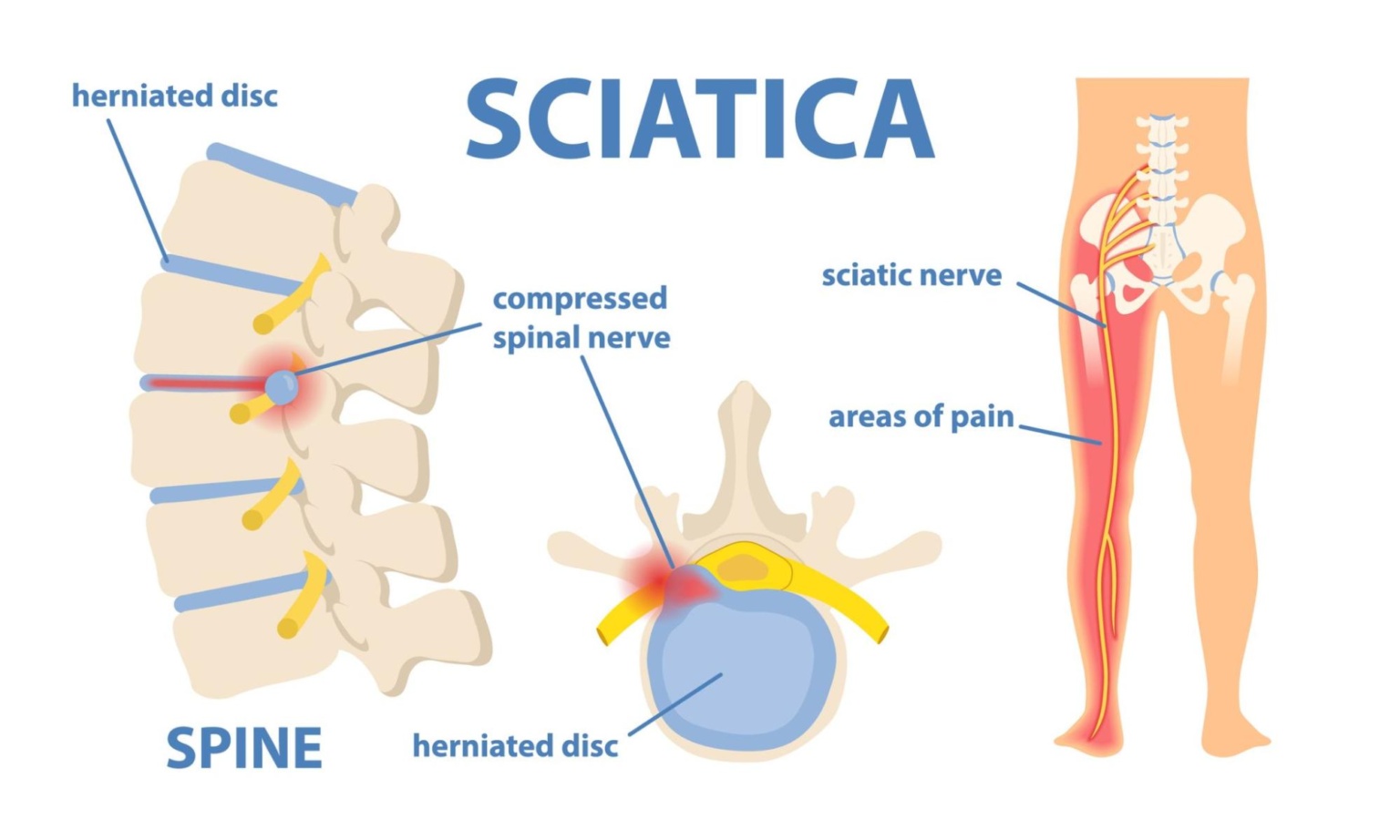Subtotal $135.00
Sciatica is a condition caused by irritation or compression of the sciatic nerve, which is the largest nerve in the body. It originates in the lower back and extends through the hips and down each leg. When this nerve is compressed or irritated, it can cause pain, numbness, tingling, or weakness in the lower back, legs, and feet. While sciatica can be painful and debilitating, understanding its causes and how physiotherapy, including hydrotherapy, can help manage the condition is essential for recovery.
Causes of Sciatica
The primary cause of sciatica is nerve compression in the lower back. One of the most common reasons is a herniated disc, where the soft inner material of a spinal disc leaks out and presses against the sciatic nerve (Mayo Clinic, 2024). Other causes include spinal stenosis, a narrowing of the spinal canal, and degenerative disc disease, where the discs between vertebrae lose their cushioning ability over time (AAOS, 2023). Additional risk factors such as poor posture, obesity, and lack of exercise can increase the likelihood of developing sciatica (WebMD, 2023).

Image: Sciatic nerve pathway from the lower back to the legs and Causes of Sciatica (Mayo Clinic, 2024)
Symptoms of Sciatica
The most common symptom of sciatica is pain, which usually starts in the lower back or buttocks and radiates down one leg. The pain can be sharp, burning, or feel like an electric shock. Some people also experience numbness, tingling, or weakness in the affected leg or foot. These symptoms often worsen with certain movements such as sitting, standing, or bending over (WebMD, 2023).
Physiotherapy Management for Sciatica
Physiotherapy is a crucial part of managing sciatica, aiming to relieve pain, improve mobility, and prevent future flare-ups. Several physiotherapy treatments can help, including:
⦁ Stretching and Strengthening Exercises: Physiotherapists often use targeted exercises to stretch tight muscles and strengthen the lower back and leg muscles. These exercises help to relieve pressure on the sciatic nerve and promote better posture (Mayo Clinic, 2024). A stronger and more flexible body can support the spine better, reducing the chance of nerve compression.
⦁ Postural Correction: Improper posture can worsen sciatica. Physiotherapists teach patients how to maintain good posture during everyday activities, such as sitting, standing, or lifting objects. This can help reduce strain on the spine and prevent further injury (AAOS, 2023).
⦁ Manual Therapy: Manual therapy techniques, such as spinal manipulation or soft tissue massage, are used by physiotherapists to relieve muscle tension and improve spinal alignment. This can reduce pressure on the sciatic nerve and help manage pain (WebMD, 2023).
⦁ Hydrotherapy: Hydrotherapy, or water therapy, is an effective treatment for sciatica. The buoyancy of water supports the body, reducing the pressure on the spine and joints, which makes exercises less painful and easier to perform. Hydrotherapy can also help relax muscles and improve circulation, which aids in healing and pain relief (Mayo Clinic, 2024). Aquatic exercises such as swimming or walking in water can be particularly beneficial for people with severe pain or limited mobility.
Conclusion
Sciatica can be a challenging condition, but with the right physiotherapy treatment, including stretching, strengthening exercises, manual therapy, and hydrotherapy, it is possible to reduce pain and improve function. Early intervention and consistent physiotherapy management play a key role in recovery, helping individuals lead a pain-free life and preventing future flare-ups.
📍 Visit Us or Book Your Session Today!
Let us help you regain confidence in movement and get back to doing what you love—without pain holding you back.
-
📍 Address: 6 Scotland Circuit, Cranbourne West, VIC 3977
-
📞 Call: 03 8805 1744
-
📧 Email: info@bestchoicephysio.com.au
-
🌐 Website: www.bestchoicephysiotherapy.com.au

 Auto Blood Presser Meter
Auto Blood Presser Meter  Dentist Chair
Dentist Chair  Surgery Hands Gloves
Surgery Hands Gloves  Blood Pressure Machine
Blood Pressure Machine  Infrared Thermometers
Infrared Thermometers 